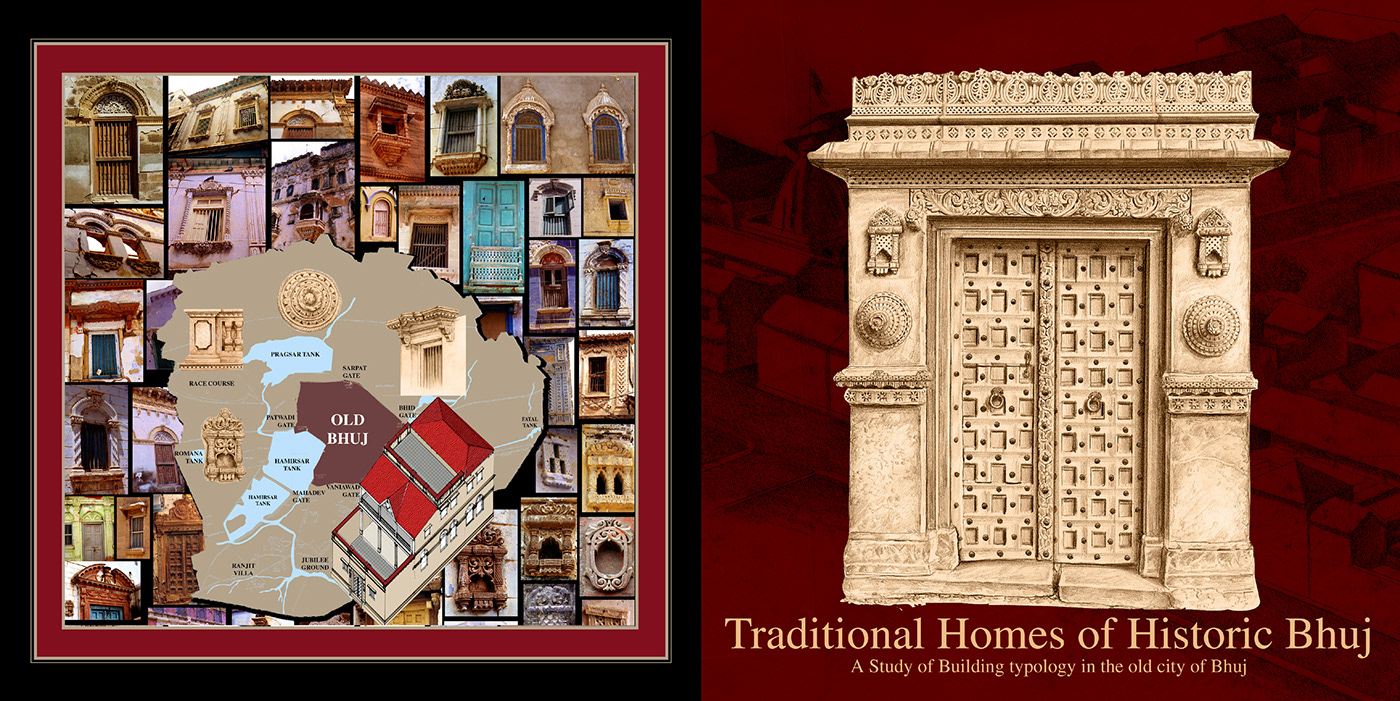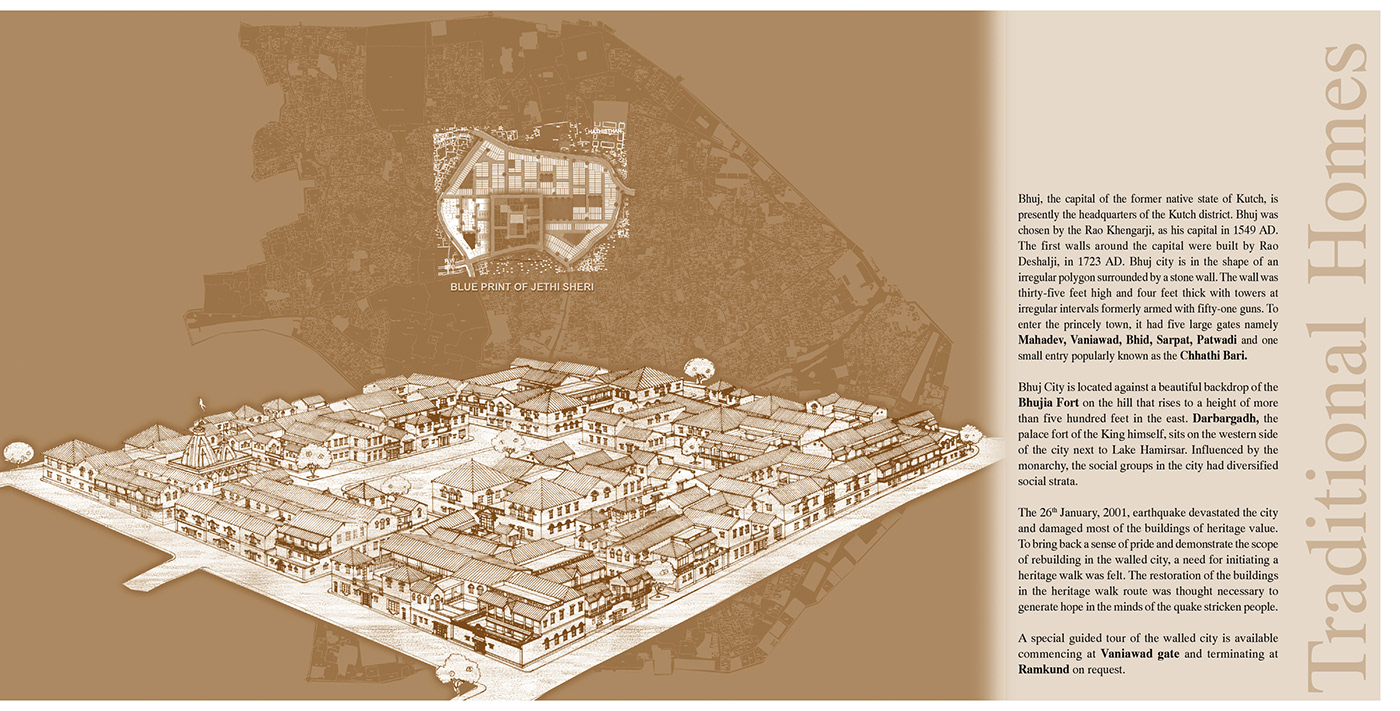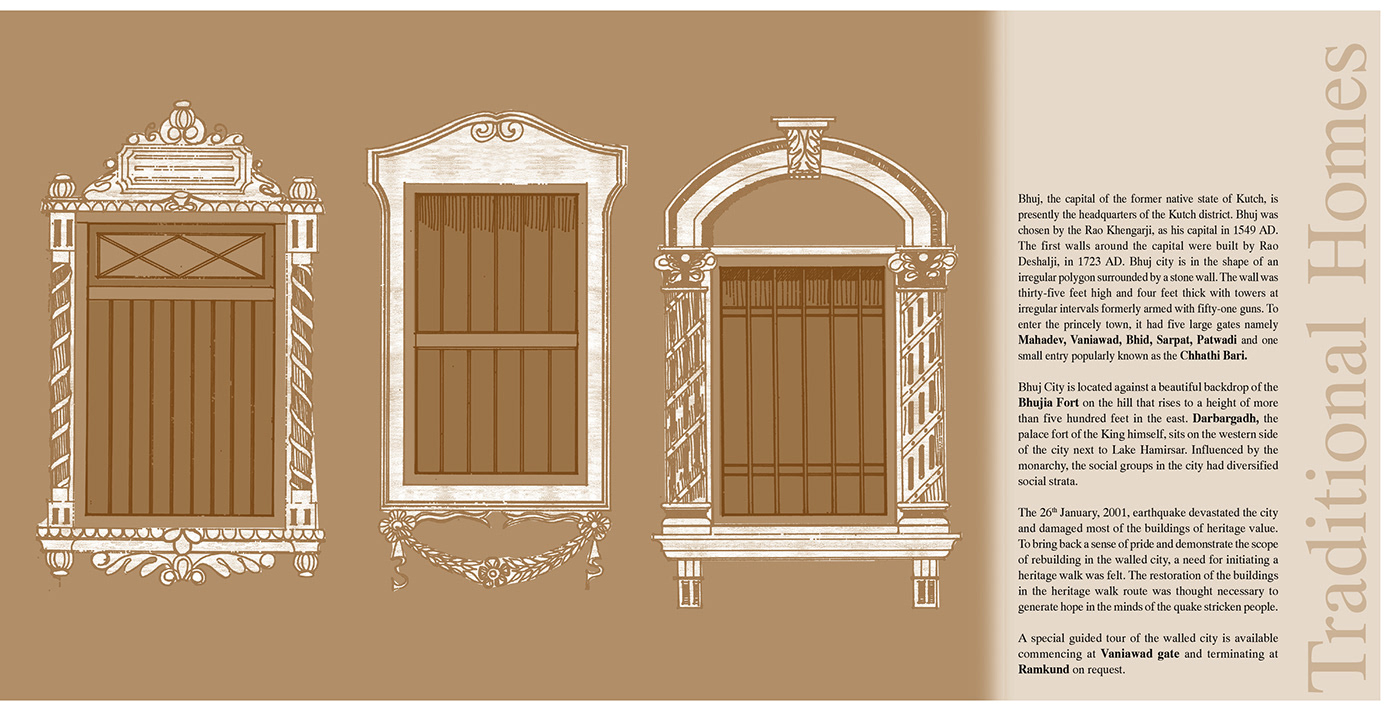Traditional Homes of Historic Bhuj
A Study of Building typology in the old city of Bhuj
Bhuj, the capital of the former native state of Kutch, is presently the headquarters of the Kutch district. Bhuj was chosen by the Rao Khengarji, as his capital in 1549 AD. The first walls around the capital were built by Rao Deshalji, in 1723 AD. Bhuj city is in the shape of an irregular polygon surrounded by a stone wall. The wall was thirty-five feet high and four feet thick with towers at irregular intervals formerly armed with fifty-one guns. To enter the princely town, it had five large gates namely Mahadev, Vaniawad, Bhid, Sarpat, Patwadi and one small entry popularly known as the Chhathi Bari.
Bhuj City is located against a beautiful backdrop of the Bhujia Fort on the hill that rises to a height of more than five hundred feet in the east. Darbargadh, the palace fort of the King himself, sits on the western side of the city next to Lake Hamirsar. Influenced by the monarchy, the social groups in the city had diversified social strata.
The 26th January, 2001, earthquake devastated the city and damaged most of the buildings of heritage value. To bring back a sense of pride and demonstrate the scope of rebuilding in the walled city, a need for initiating a
heritage walk was felt. The restoration of the buildings in the heritage walk route was thought necessary to generate hope in the minds of the quake stricken people.
A special guided tour of the walled city is available commencing at Vaniawad gate and terminating at Ramkund on request.











